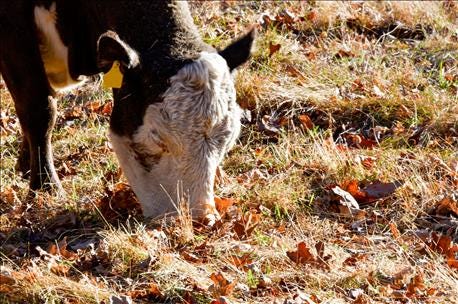
For several decades I seemed to live in mud during much of the Winter and Spring. I have managed to get my truck stuck on multiple occasions during other seasons. I have spent the night (back before cell phones) wet to my knees trying to sleep in an ice cold truck that would not move in the goo. Crushed limestone was an annual expense charged to the steers.
I still get stuck on occasion as a result of making a bad decision. But shortly after the moisture stops we can usually go. The changes we have made in planned grazing and management since 2007 are the major reason for our ability to move over the pastures year round. Remember we average almost 5” of moisture every month.

Could improved grazing tactics make for better water management at your operation? Could be. (Photo: lens3c/Thinkstock)
There is only one place to stop and hold rain as it falls from the sky at 20+ mph to the surface of Mother Earth. That place is where it lands initially. Once it hits home and moves it is headed down hill to puddle, pond, or stream and then the river, and flood if the event last a little too long. Technically we can direct water for a while and then there is often more than we can handle. TVA and Corps of Engineers dams have been far from 100% successful in flood control. Man’s inability to plan for big rains has been proven over and over. Floods are an all too common event.
At the opposite end of the scale or weather pattern is our inability to successfully operate through a drought. These may seem to be facts of life. As best I can tell there are more producers throwing their hands up every decade when the rains fail to come.
Managing water
Droughts and floods have a history of devastation to North American farms and ranches. Both extremes are manmade to a great extent. Preparation to prevent flooding and drought are critical to all forms of ranching/farming and even our city cousins. Even if we have first water rights and a very functional irrigation system in place that is state of the art, the water that falls from the sky and its highly efficient use is our best and by far our most economical source of moisture to grow healthy plants and cattle. Remember, catch it where it falls or lose it forever.
At 499 starting in 2007 we became aware of and started making changes to take advantage of high density cattle grazing. We ran into more good information and made additional changes over the next several years. Eventually I ran into Savory’s explanation and began to understand what he was saying. I pondered and looked around. I monitored in front of the cattle, behind the cattle, and while cattle were grazing. I monitored manure, soil depth and moisture and activity. I monitored plant diversity, cattle biting percentage and severity on individual plants, and other results of fast movement high density grazing, followed by complete recovery. Within a few months I started noticing differences (improvements) in rain fall effects in various areas. Run off of water and ponding in low areas after a 3 inch event stopped. We were actually making some more real progress.
I’ll continue this sermon next week. Stay tuned. I promise for a good ending and the rest of the story and truth.
About the Author(s)
You May Also Like






